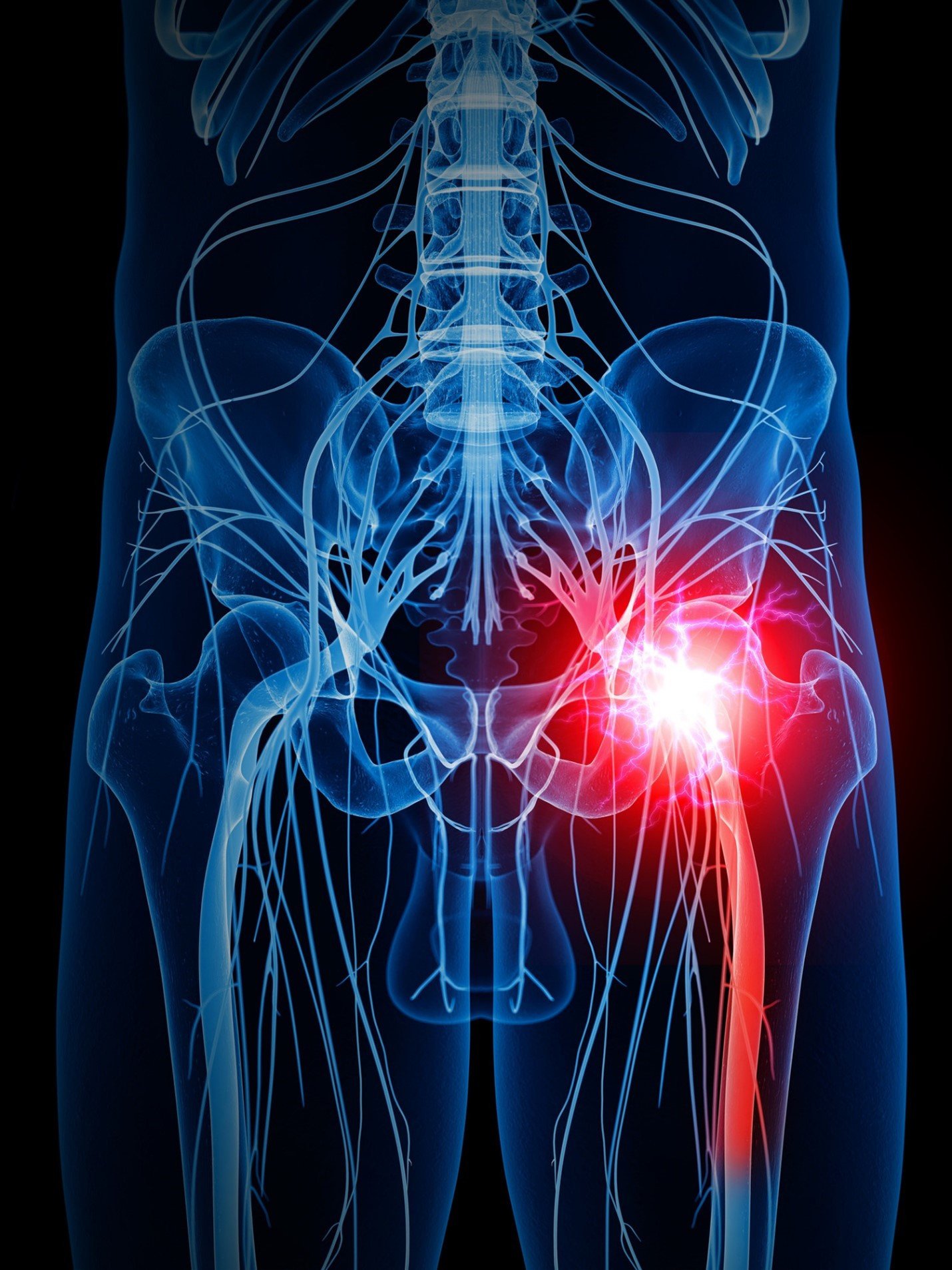Understanding Sciatica: An Osteopath’s Perspective
Sciatica is a common yet often misunderstood condition that I frequently see in clinic. It refers to pain that travels along the path of the sciatic nerve – the longest and thickest nerve in the body – which runs from the lower back through the buttocks and down the legs. While “sciatica” is often used as a catch-all term for leg pain, true sciatica is specifically caused by irritation or compression of the sciatic nerve.
Anatomy & Physiology: What’s Really Going On?
The sciatic nerve originates from the lower part of the spine (L4–S3 nerve roots), forming a thick bundle that exits the pelvis and travels down the back of each leg. Its role is to supply sensation and motor control to the lower limb.
Compression or irritation of the nerve – often due to a herniated lumbar disc, spinal stenosis, spondylolisthesis, or piriformis syndrome or even from pregnancy or uterine fibroids – leads to the characteristic pain, tingling, or weakness that people associate with sciatica.
Symptoms of Sciatica
Sharp, shooting, or burning pain down the leg (usually only one side)
Numbness or tingling in the leg or foot
Muscle weakness in the affected leg
Pain worsened by sitting, bending, or twisting
Occasionally, lower back pain (though not always present)
How Osteopathy Can Help
As an osteopath, I approach sciatica by assessing not just the site of pain, but how the body as a whole is functioning. Treatment focuses on reducing nerve irritation, improving spinal mobility, and relieving muscle tension that may be contributing to the problem.
Hands-on techniques may include:
Gentle spinal and pelvic mobilisations
Soft tissue release of the lower back, glutes, and hamstrings
Postural correction and movement retraining
Advice on modifying daily activities
We also look further afield – poor hip mechanics, tight fascia, or altered gait can all feed into sciatic symptoms.
At-Home Care & Self-Management
Gentle movement is key – prolonged rest can make things worse. Short walks and light stretching often help.
Stretches: Focus on hamstrings, glutes, and the piriformis muscle.
Ice (or alternating hot & cold) can ease pain – use whichever provides more relief.
Ergonomic adjustments: Sit with your hips higher than your knees, avoid slouching, and take regular breaks from sitting.
Strengthen your core and glutes over time – this reduces load on the lower back.
If symptoms are severe, worsening, or not improving after a few weeks, it's essential to seek professional advice. Occasionally, scans or referral to a specialist may be needed.
Final Thought
Sciatica can be incredibly uncomfortable, but with a clear understanding of the cause and a holistic treatment plan, recovery is very achievable. As osteopaths, we don’t just chase symptoms – we help your body move better, feel stronger, and get back to living.





